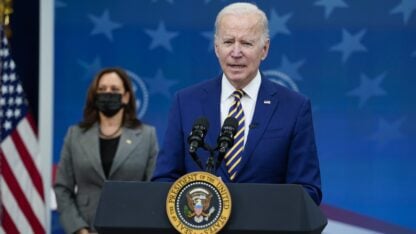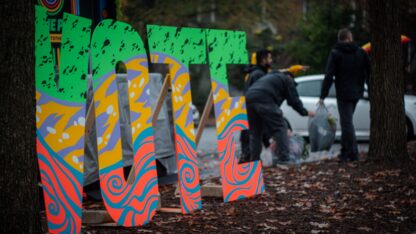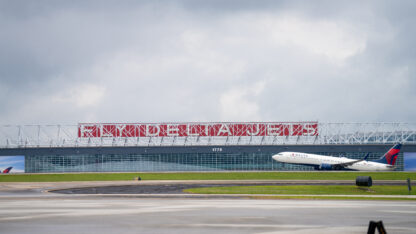Growing Georgia Community Finds New Residents Pose Challenge For Transit
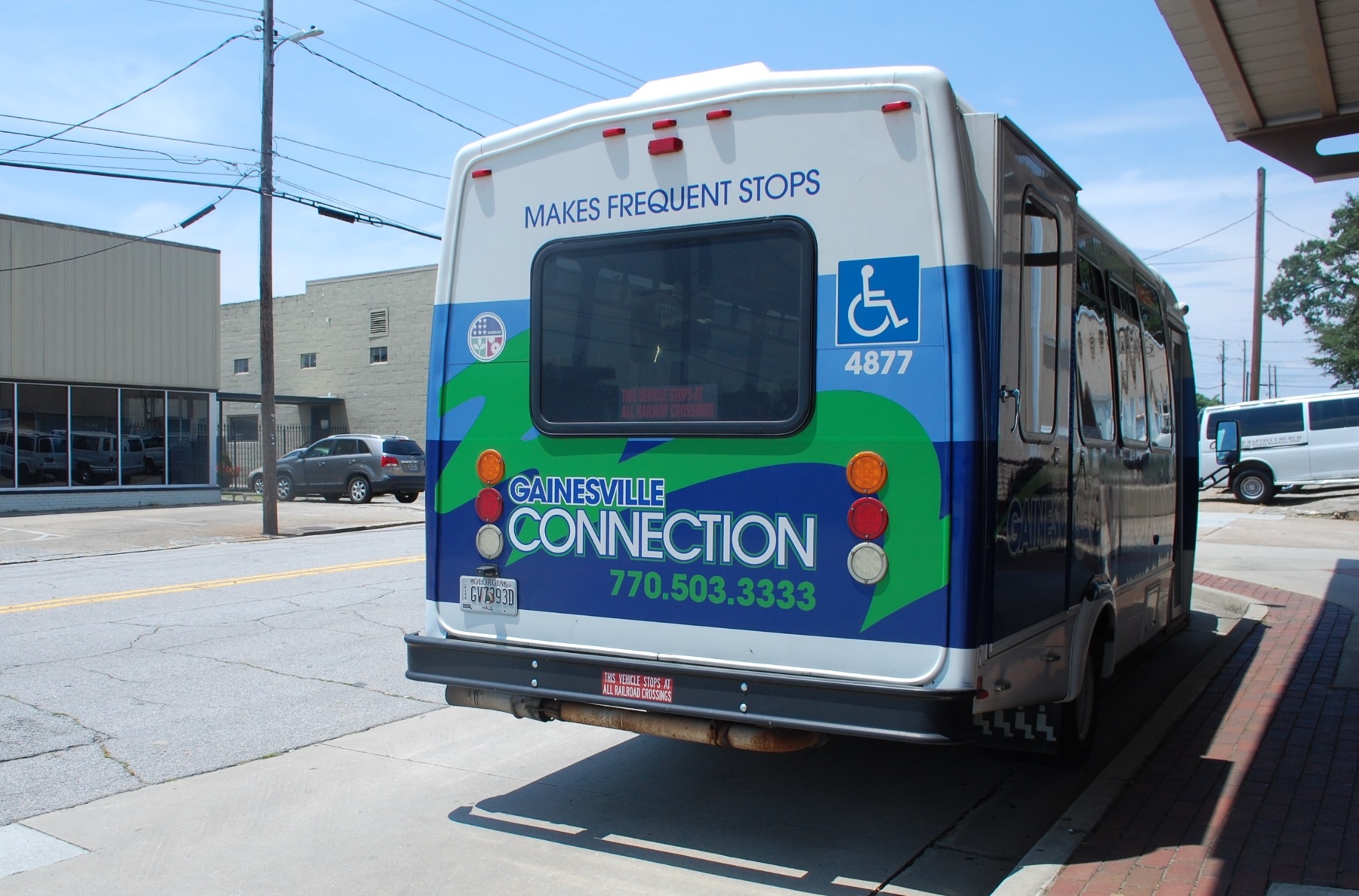
Gainesville, Georgia, isn’t within the reach of MARTA, so the city operates a weekday bus service of its own.
Stephannie Stokes / WABE
Across the country, people are headed for the exurbs. Those are the areas at the fringe of metropolitan areas.
According to the Brookings Institute, growth in the exurbs has quadrupled since 2012.
But one community in Georgia is finding all of those new residents can come with new challenges — particularly for funding transit.
Booming Population
Gainesville is about 50 miles north of Atlanta — well outside the reach of MARTA. So, the city operates a bus service of its own.
Hall Area Transit Director Philippa Moss boards one of the short shuttle buses. As the bus follows its route, the surrounding town seems to evolve.
“When you enter the city, you’ve got the manufacturing, the stacks and so forth,” Moss said, looking out the window.
Then, the old factories and brick storefronts give way to sprawling shopping centers, with just about every chain store there is.
“A lot of these buildings are newer developments in the last 10-plus years,” Moss said.
In that time, Gainesville’s population has grown by thousands each year. The area is now edging toward 200,000.
But while the traffic has increased, ridership on the city’s buses hasn’t. The system is limited: there are six routes that only run weekdays until 6 p.m.
“We have not invested a lot of dollars into developing this system. So honestly, we’ve been stagnant for many years. We haven’t seen a lot of growth,” Moss said.
Recently, Moss pushed to change that, by adding new bus stops and weekend service. And she said residents were excited.
Then, the expansion plans came to a halt.
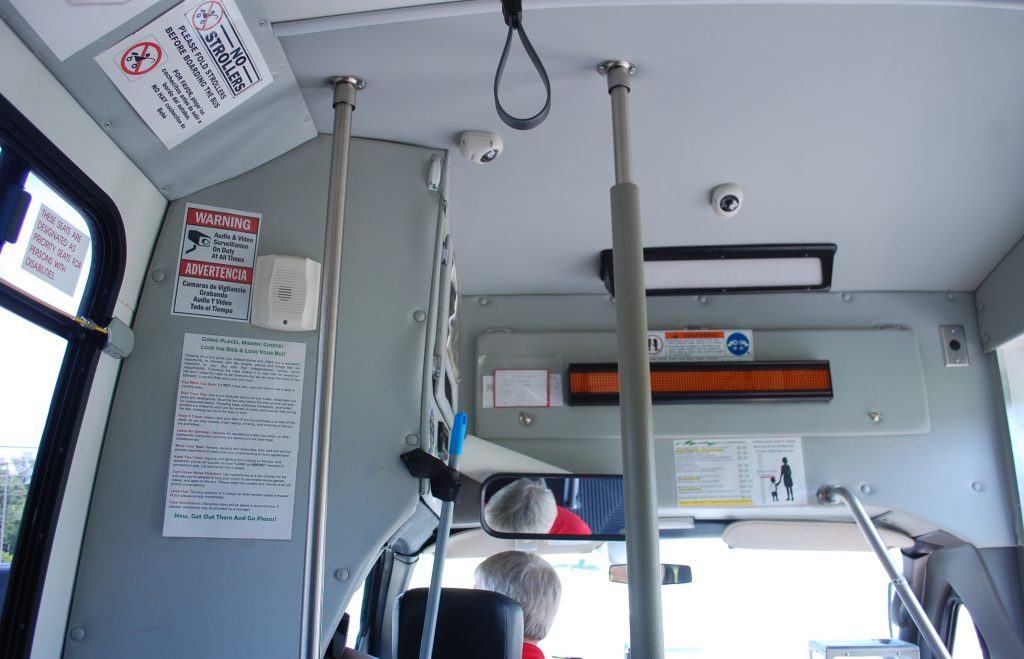
Transit Growing Pains
“Our council is committed to funding public transit. They’re just a little scared, which I am as well,” said Bryan Lackey, Gainesville city manager.
He said right now Gainesville gets federal help for its buses — a dollar for dollar match as part of a program for smaller cities. Think of it like a kid receiving an allowance.
But when the area hits 200,000 residents, it becomes like an adult in the Federal Transit Administration’s eyes, and that funding stops.
“Losing that 50 percent match on our public transit system is huge for us,” Lackey said.
And Lackey said leaders realized if they invest more in buses now, Gainesville soon would be on the hook for an even bigger bill.
The city, he said, doesn’t have extra money for transit.
“You either take away from another important service or you raise taxes,” Lackey said. “And, you know, perhaps raising taxes for public transportation may not be something the community as a whole wants to do.”
Future Benefits Vs. Current Costs
Still, the change in course has left at least part of the community disappointed.
Donna Mincey walks through her family’s factory, Mincey Marble, as workers sand down white panels.
“They’re making shower panels and shower bases out here,” Mincey said.
Mincey said she wishes Gainesville would think more about the future benefits of transit than the current costs.
She believes it would help her retain employees. Gainesville has one of the lowest unemployment rates in the state.
“The bus system just needs to grow up,” Mincey said. “In Atlanta, you can get almost anywhere you want to go on a bus, and it’s not like that when you get out in the outlying counties.”
The bus system just needs to grow up.
Donna Mincey of Mincey Marble
You can’t get to her factory on the bus or several other manufacturing plants. So workers without cars often pay co-workers for rides.
Or they’re like Ivan Barnett, who is sitting at a bus stop. When he worked at the Kubota farm equipment plant here, he took a cab.
“Going to Kubota was about 14,” Barnett said. “It was about $14.”
And that’s just one way. He said a connecting bus to the plant would definitely help.
“I would love that bus because it would save a lot of people a lot of money,” he said.
‘Design Our Growth’
Kevan Stone, executive director of the National Association of County Engineers, said exurban areas across the country are facing issues that many suburban areas dealt with before them.
“It’s just natural that you just see the expansion, the swelling of that metropolitan area go into the next region, the next town, next county,” he said.
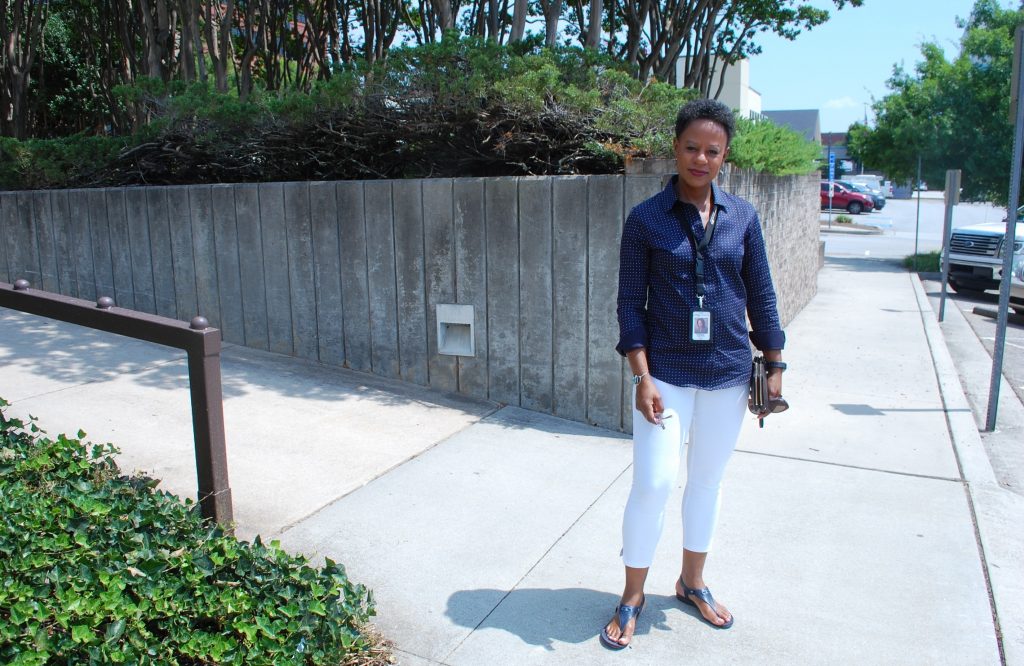
New residents are good for these places, Stone said — they bring more tax money. But an increasing population does require increased investment in infrastructure, like roads or transit.
With the latter, Stone said Gainesville might be in a better position than most, since it already has a bus system in place.
“Some communities that have existing transit authorities,” he said, “they’re a little bit more up to speed in terms of what to expect and how to handle the increase in population.”
And transit director Phillippa Moss is optimistic.
She said she’s working to find alternative funding sources for buses in Gainesville — so transit can expand with the area’s population.
“I think we want to design our growth as opposed to just being at the effect of our growth,” Moss said.
The sooner Gainesville figures out how to do that, she said, the better.

